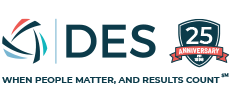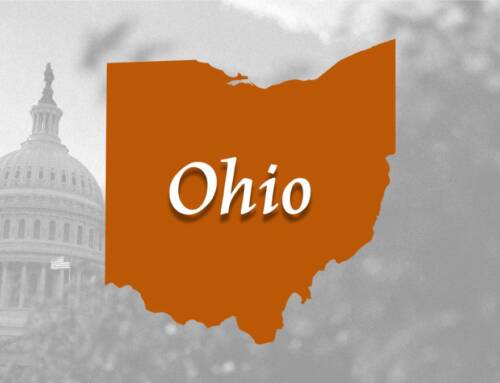Workplace insights with Anil Gulati, President and CEO of Diversified Employee Solutions
It’s no secret that Human Resources is a complex topic, and rapid shifts in the workplace landscape over the last few years have only added to the complexity. From The Great Resignation to the remote/hybrid work push to the slippery slope of vaccine mandates, the topography is precarious.
To help navigate this deeply nuanced terrain, many small to mid-sized businesses are relying on HR management companies to help fill the gap. Expert guidance and key insights translate to time and money saved. We recently sat down with Anil Gulati, President and CEO of Diversified Employee Solutions, and gleaned a few HR insights for today’s business owners and managers.
Can you tell us a little bit about your background, and how you became the president and CEO of Diversified Employee Solutions?
I have 30 years in the professional world, with an interesting arc in my personal journey. The first 10 years of my life I was involved in strategy consulting, working for global companies on several continents: understanding how they operate, how successful they are, and how they’re not successful in certain areas. And over the last 20 years, I’ve been involved in private equity, buying small businesses anywhere from $100 million to $600 million in revenue. It’s been an interesting journey.
This particular opportunity with DES came through my contacts in the legal field, and they thought that, because of where the organization is, I might be interested in helping it get to the next level.
What is the driving force behind your interest in human resources?
So, that’s an interesting question because it’s not so much about human resources, but more about leveraging my background in smaller businesses. I find that, from all the states in the United States, there’s diversification between companies that are small, medium, and large, and that’s been changing in dynamic. So, there’s multiple functions, right? Marketing, Corporate Finance, Production, Talent Management… One CEO is not going to be an expert in all those areas but, throughout my career, I’ve had the opportunity to work in a lot of these functions.
And so, it’s not just about HR. It’s about HR as one in the order. If you put everything together, all the functions, that’s what creates an organization – that creates culture. There are many factors here, but the driving factor is how to help the company and organization succeed and get to the next level.
In your opinion, what challenges do you feel face the HR industry right now, and what can companies employ to navigate said challenge?
The top three that immediately come to mind that everyone’s talking about are: how the workforce has changed, how it’s tough to retain talent, and how people are just retiring.
Is it a shift towards a hybrid environment where you are working from home some parts of the week, and then other days you’re in the office, or is it a 100% back, or is it a 100% remote? There are three options. That’s one. As far as workplace challenges go, I think that each company will find a happy medium, depending on the geography that they’re in, the industry that they’re in, and the number of people that they currently employ.
The second one, which was talent retention. That’s a real dynamic one because, as you know, in years past, sometimes the employers have the upper hand and sometimes the employees have the upper hand. And we’re in a phase now where the employees have the upper hand. And I feel that there will come a point in time where that pendulum will swing again. But I think the key here for all employers is how not to overreact in any of the situations and keep a cool head. It’s a challenge, but I think that there are opportunities to be found in the way you navigate through this.
The last one is people just retiring. I think that one thing companies can do to help themselves with all of these struggles is to focus on their employees and their skill sets. What skill sets do they really have? Test for skill sets, test for people, have a broader mind, don’t be so myopic in your thinking that, “Here’s the only criteria I have, and it will only fit this job.”
But our economy is primarily service-based. There are a lot of individuals who have a lot of good skill sets, and I think companies need to open, and be a little bit broader-based in their thinking, because you can have people that might be in manufacturing that can do perfectly in the service industry. You don’t know, but they’re transferable skill sets. Focus on that.
As an organizational leader, what can executives do to aid their HR professionals during these post-pandemic times?
Our HR professionals in all companies throughout the entire country have taken the brunt of this because it’s the first time anyone had to deal with it. I think that as a management person, make sure you have enough time in the day, every day, that you’re talking to your HR professionals, so you and they are really, really clear about the company’s point of view on all the issues.
I think that’s where management falls into a trap. A lot of the time, management will not spend time with their HR team, but they need to. Spend the time with your HR professionals, and encourage them to reach out to other HR professionals in the field. They need to know that they’re not in this fight alone, because all other companies are struggling with very similar issues. So that’s a good thing: reach out and make sure you clearly align. As issues arise with your employee base or talent management, make sure you solve them immediately. And then, have them reach out to other folks, HR professionals, or their trade organization. Trade organizations in all industries are great go-to places so you can level set.
Retaining talent is a big challenge facing HR now. Company culture and employee treatment are more vital than ever. What is the most challenging part of being a CEO in a workforce that considers corporate culture more important than traditional priorities?
That’s a good, piercing question, especially for someone brought up in the old school. What you’re referring to, the traditional priorities, is what I’m referring to when I say old school.
My general sense is that priorities change at a personal level, at a professional level, and at a corporate level. We live in a constant, ever-changing environment. I mean, the pandemic, I’ve never gone through it before. You’ve never gone through it before. It’s brand new, but priorities change. So as generations change, there are generational priorities that change too. And now, if there are folks that rate a corporate culture to be more important than, let’s say, the type of opportunity, then so be it.
But I think that as an executive, you must adapt. You must work with younger people consistently, and you must also work with them to show them that this is their point of view, but here’s my point of view. And maybe we can come together, and still serve the general purpose of the firm, which is to help our clients achieve success. And in this realm, it’s through the HR function. Culture is a living organism. It will always ebb and flow, but you must be able to look forward, and you must adapt. So as an executive, my adaptation, my process has been working with people like yourself. I’m not on social media as much; I spend more of my time reading than going on there, but I understand it’s important.
[Interviewer]: And a fun fact for today, I’m the youngest employee at Diversified Employee Solutions, so we are the perfect example of bridging that gap.
And at the same time, you are also trying to learn marketing/sales, of course, effectiveness. We don’t want to lose sight of that since you’re motivated to learn skill sets that are transferable. And when you work with older folks, you get to learn some of the things that you would not have learned before. And so, we can’t lose sight of what the firm is doing, but at the same time, we know that culture is important. When you focus on employees to begin with, you don’t have a problem with culture because culture is going to be ever-changing. It’s going to move forward.




